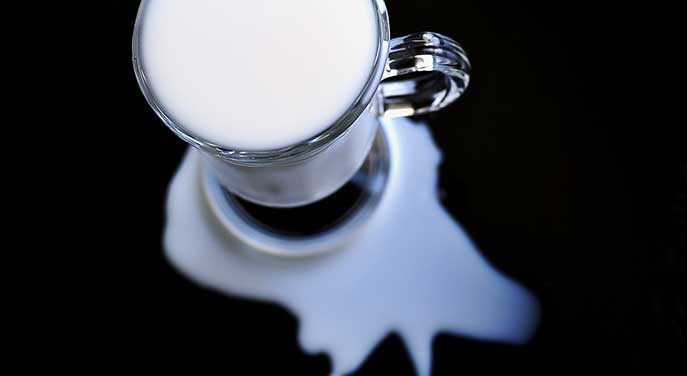 Every year, the Canadian Dairy Commission (CDC), a branch of the federal government, hires external consultants to assess the cost of producing milk on the farm. The CDC has never released any data about costing and has recommended farm milk price increases most years, eventually impacting retail prices and Canadian families.
Every year, the Canadian Dairy Commission (CDC), a branch of the federal government, hires external consultants to assess the cost of producing milk on the farm. The CDC has never released any data about costing and has recommended farm milk price increases most years, eventually impacting retail prices and Canadian families.
Since February, dairy product prices have increased on average by anywhere from 10 to 15 per cent.
However, some CDC data was recently leaked that gives us a better picture of how the cost of milk production is determined. The CDC has announced not one but two hikes this year: the first was a record-breaking 8.4 per cent in February, and the second, 2.5 per cent, will come into effect on Sept. 1.
According to the CDC’s own leaked data, it appears that these increases are simply unfounded.
The CDC normally bases its recommendations on an annual survey conducted by hired consultants. They survey more than 200 dairy farms all over the country to measure the cost of producing milk. Recently, the results from the 2021 survey were presented in a confidential meeting. The standardized cost of production went from $85.42 per hectolitre to $84.57 per hectolitre, a one per cent drop.
Notwithstanding this year’s record hike – announced in October 2021 – the CDC increased milk prices by two per cent in 2020. All that was going on while the cost to produce a hectolitre was either slightly increasing or dropping in Canada.
According to the report, some farm costs did go up, like feed at $0.76 per hectolitre and fuel at $0.28 per hectolitre. But other costs per unit went down, outweighing items that cost more. For example, standardized fixed-rate labour and labour, in general, dropped by $0.91 per hectolitre, and standardized capital costs fell $0.54 per hectolitre.
The CDC’s pricing formula includes all aspects of dairy farming, from infrastructure to veterinary medicine and promotion – everything except the subsidies given to dairy farmers for hypothetical losses incurred from trade deals. The margin of error for this year’s survey was 2.06 per cent, lower than in 2020 (2.35 per cent).
Early results of the 2022 survey suggest costs are going up but that should impact prices in 2023, not this year. Most disappointing is the fact that the commission – the government – likely succumbed to pressures from the dairy industry by increasing farmgate prices without any sound empirical data to justify increases. It’s all anecdotal. This points to how the CDC’s governance has become a reputational liability for the dairy industry and for Canadian consumers.
The idea that dairy production per unit can be less costly may sound counterintuitive. After all, inflation is affecting all aspects of our lives. Farmers, industry experts and even the public bought into the argument that everything is more expensive, even for dairy farmers.
The reality is different: many dairy farms now operate with hardly any humans around. Technology is taking care of the most intensive aspects of dairy farming.
Dairy genetics have also come a long way. Some U.S. estimates suggest that the industry is producing 60 per cent more milk with 30 per cent fewer cows compared to 50 years ago. According to Agriculture and Agri-Food Canada, Canada was home to 977,000 dairy cows in 2021 while producing 95 million hectolitres of milk. In 1990, Canada had almost 1.4 million dairy cows and produced 73 million hectolitres of milk. That’s 43 per cent fewer cows, with a 31 per cent increase in production. That will bring costs down.
Last year’s “Buttergate” episode, when Canadians learned that dairy farmers were using imported palm oil derivatives from Indonesia or Malaysia to produce more butterfat, adheres to the same modus operandi. It not only made butter harder but using palmite is another method to decrease costs while generating more revenue.
The practice was banned for a while, but dairy farmers are back at it. The Dairy Farmers of Canada are only discouraging – not banning – the course, as dairy farming is self-regulated with little governmental oversight on quality assurance.
Dairy farming is generally getting more efficient, although two versions of farming are colliding in Canada’s dairy industry.
On the one hand, many dairy farmers are investing in technology, making farms more efficient, and bringing down costs per unit produced. Most of these farms are west of Toronto, through to British Columbia.
The farms east of Toronto offer a very different scenario. These farms are much less efficient, smaller on average, and just looking for ‘fair pricing,’ supported by the CDC’s focus on increasing prices, no matter what. Over the years, that ‘fair pricing’ mentality has pushed farmgate milk prices higher.
Most of these farms are in eastern Ontario, Quebec and the Atlantic region. Quebec has half of all dairy farms in Canada. It’s no coincidence that most of the loudest voices defending supply management and our quota system come from that part of the country. As a result, milk prices in Canada are about 30 per cent higher than the world average.
The CDC is morally and ethically compromised and needs to distance itself from the dairy sector immediately. More transparency, honesty, and better communications would also improve the Crown corporation’s public image. Most federal Crown corporations have been forthcoming with data to allow the public to understand and appreciate their work, but not the CDC.
To be clear, dairy farmers are victims as much as the public. Dairy farmers, politicians, and even Agriculture and Agri-Food Minister Marie-Claude Bibeau have been hypnotized by the CDC’s gibberish and numbers. They don’t fully understand the system, relying on Dairy Farmers of Canada’s loud and influential voice.
It’s disappointing that we needed a leaked document to realize that recommendations given by the CDC are based on weak evidence and hearsay.
For years, many speculated that the CDC was misleading the public. Now we know that the Canadian dairy industry’s smoking gun was indeed real.
Dr. Sylvain Charlebois is senior director of the agri-food analytics lab and a professor in food distribution and policy at Dalhousie University.
For interview requests, click here.
The opinions expressed by our columnists and contributors are theirs alone and do not inherently or expressly reflect the views of our publication.
© Troy Media
Troy Media is an editorial content provider to media outlets and its own hosted community news outlets across Canada.


